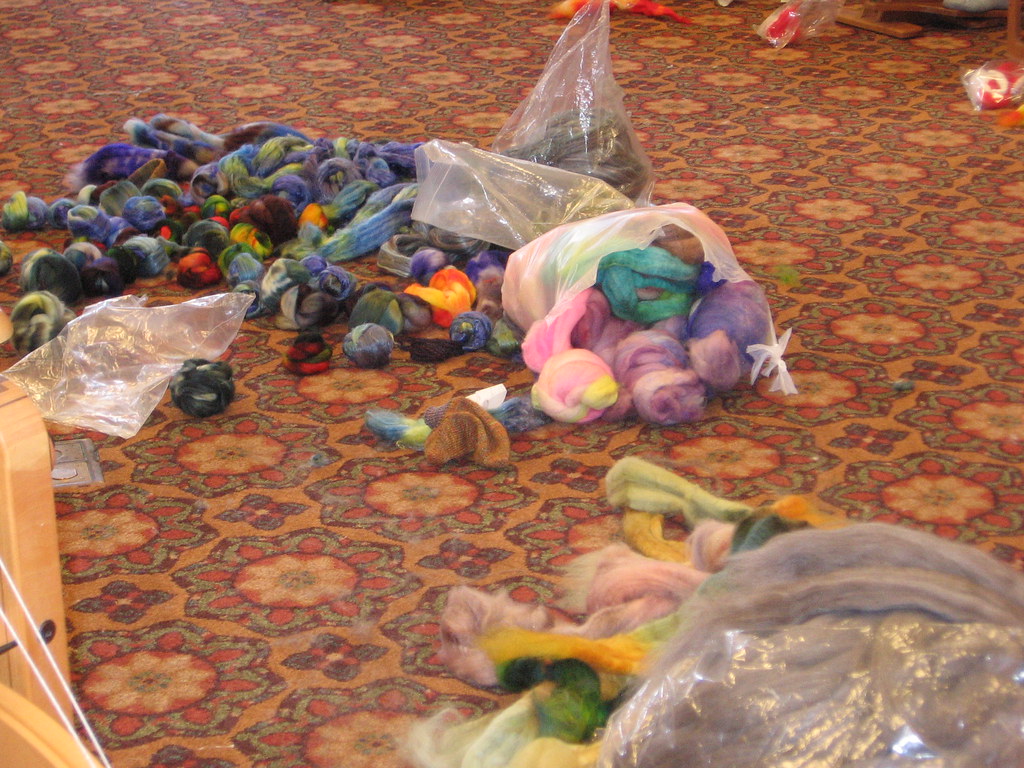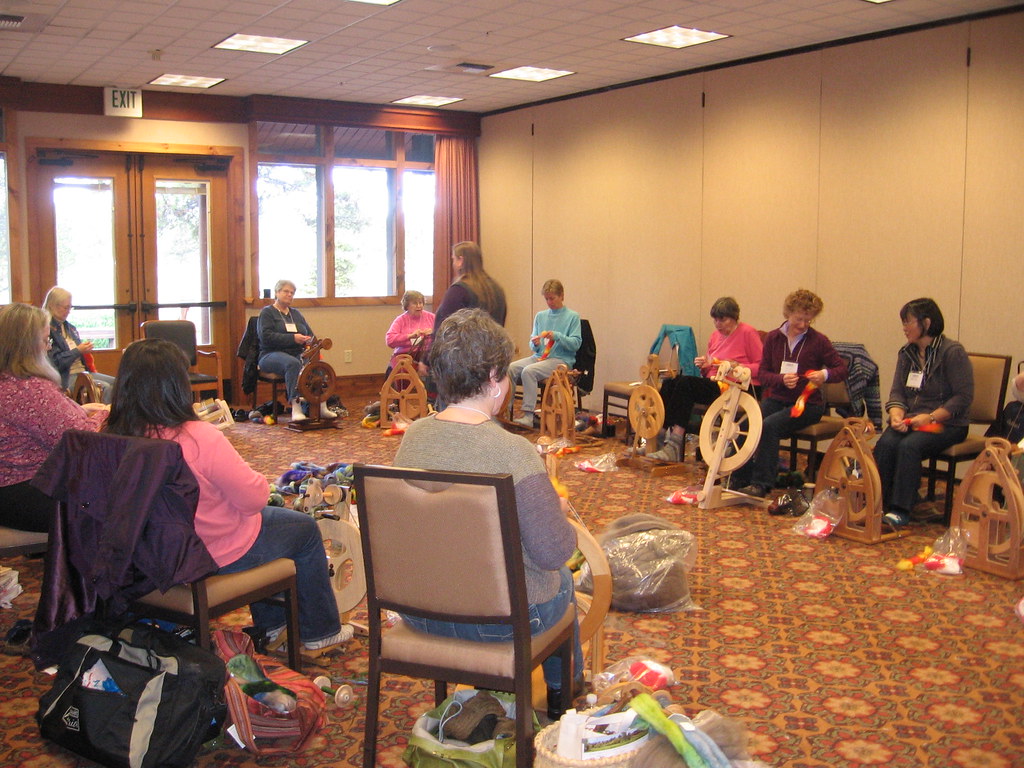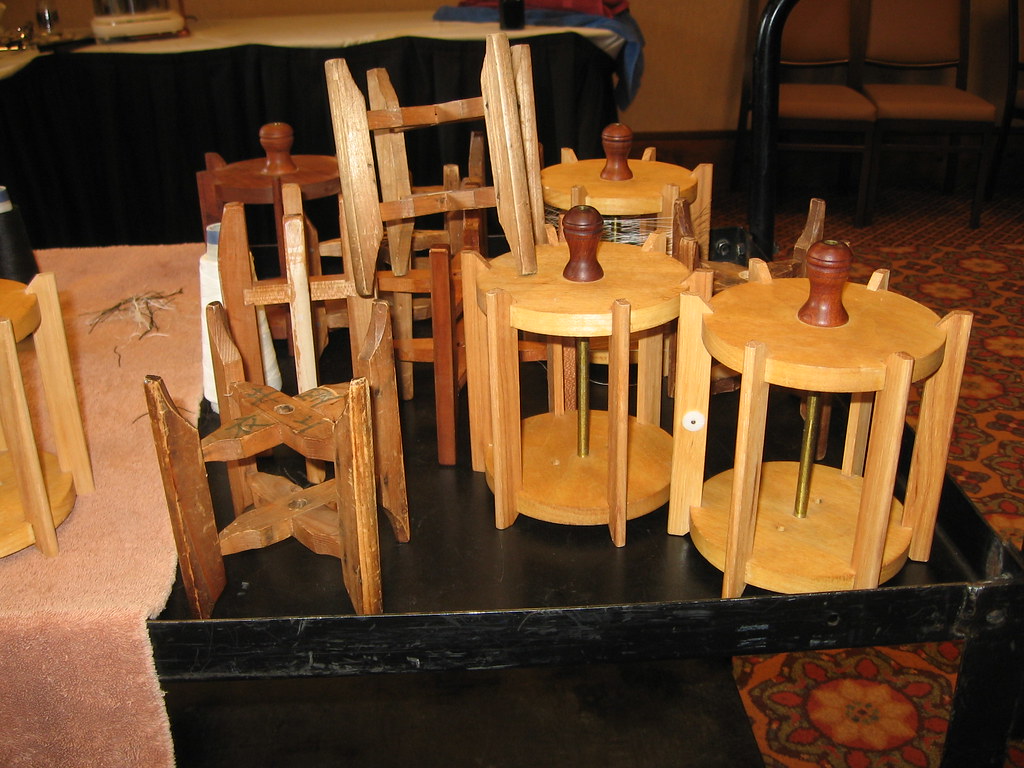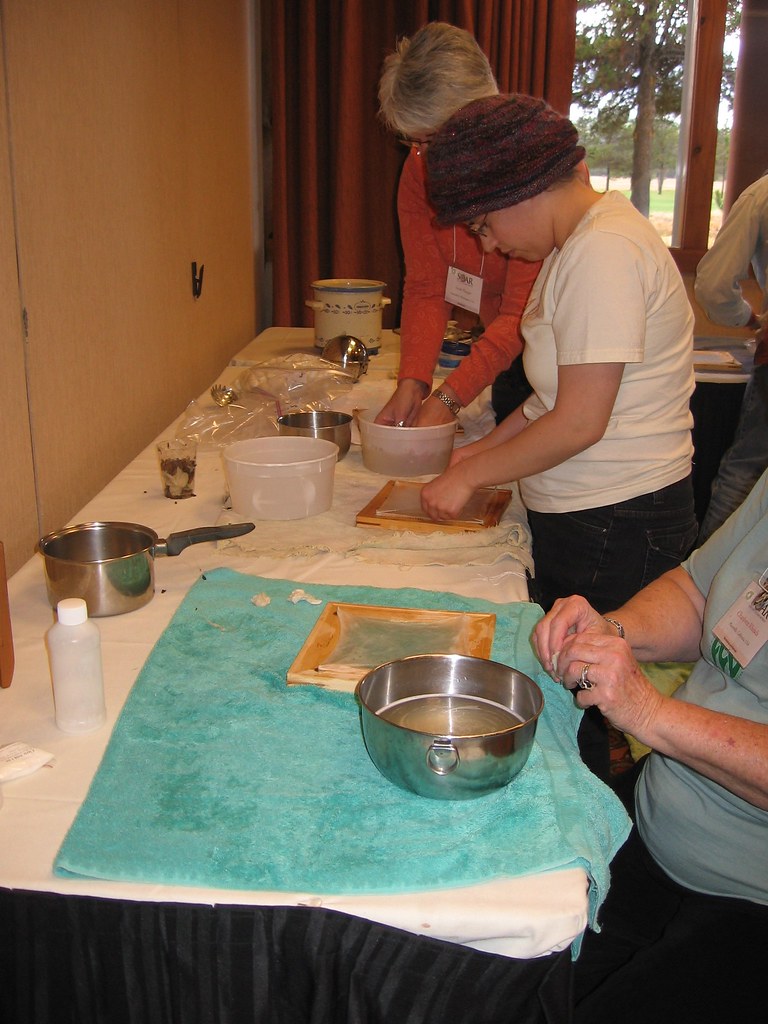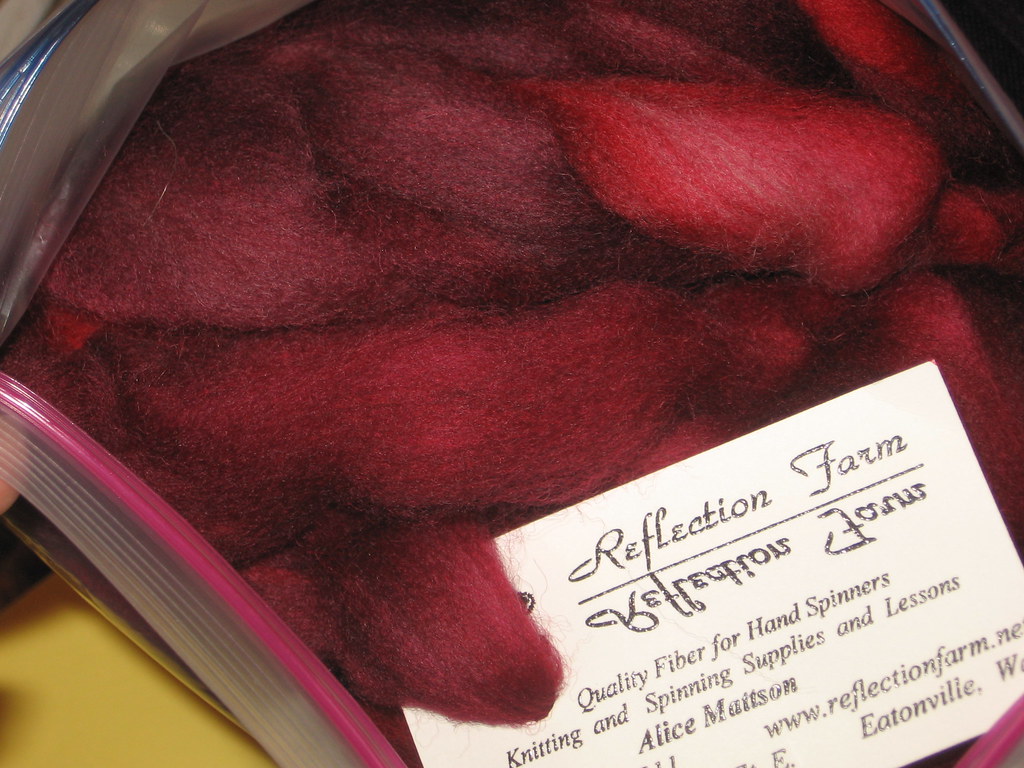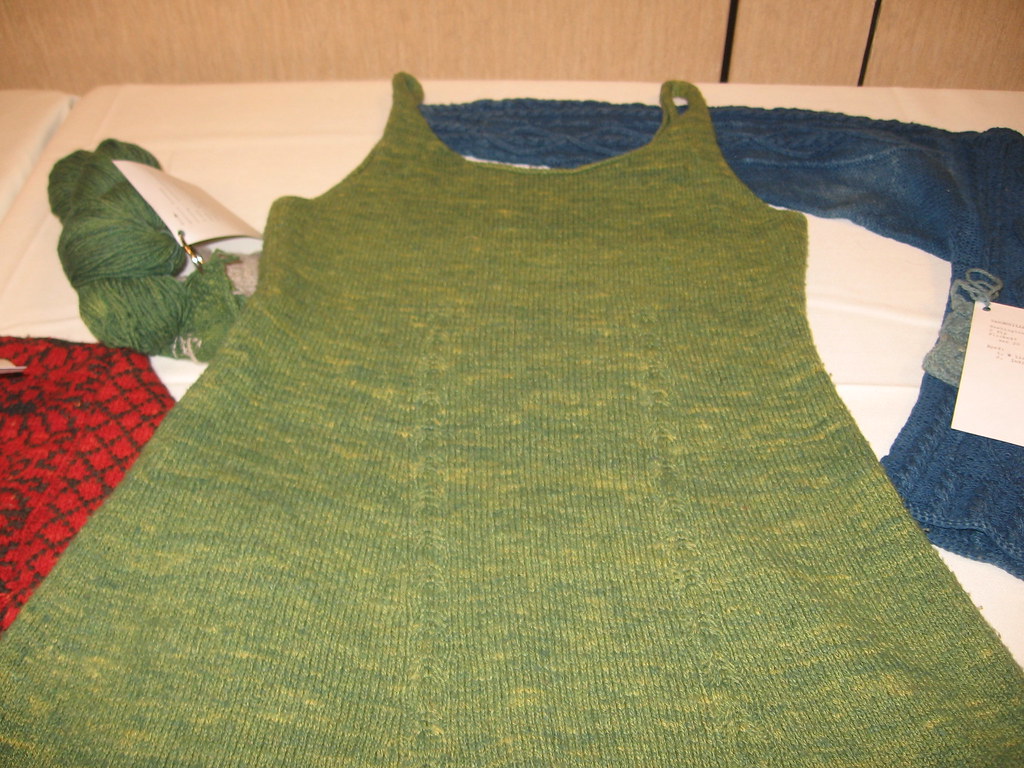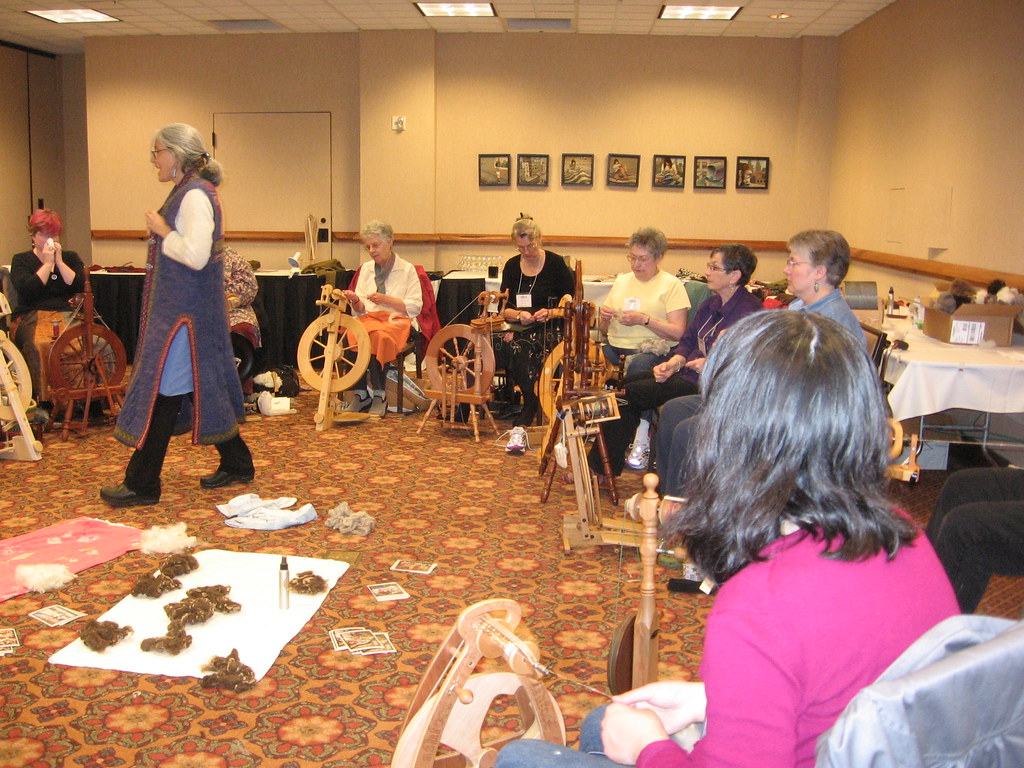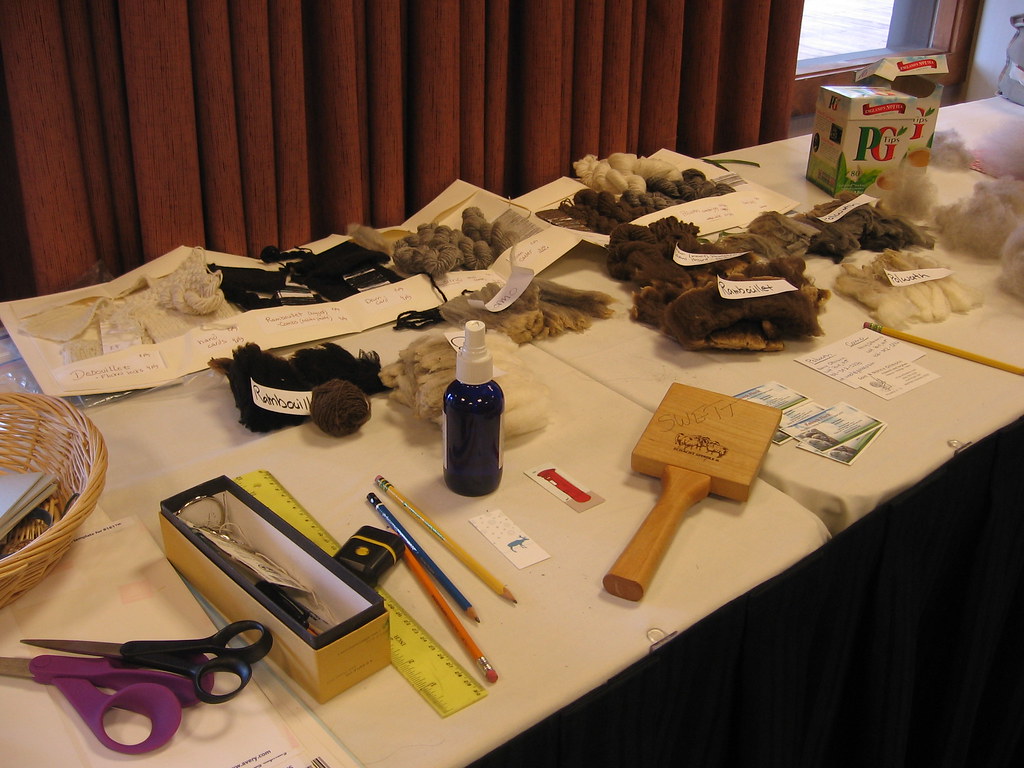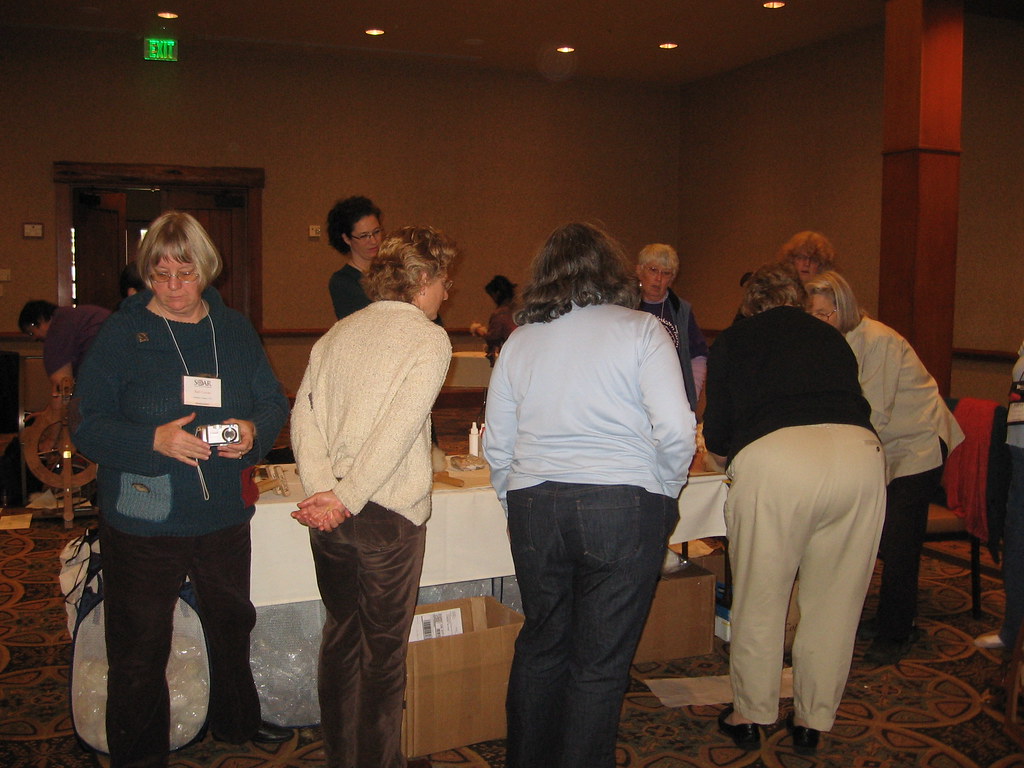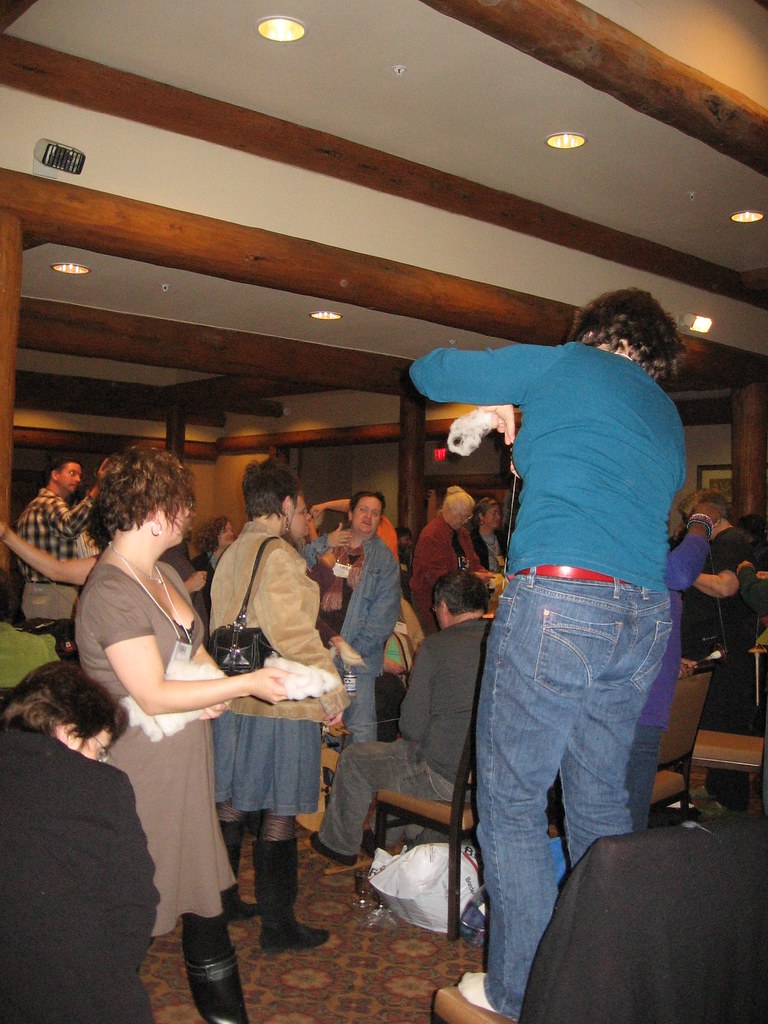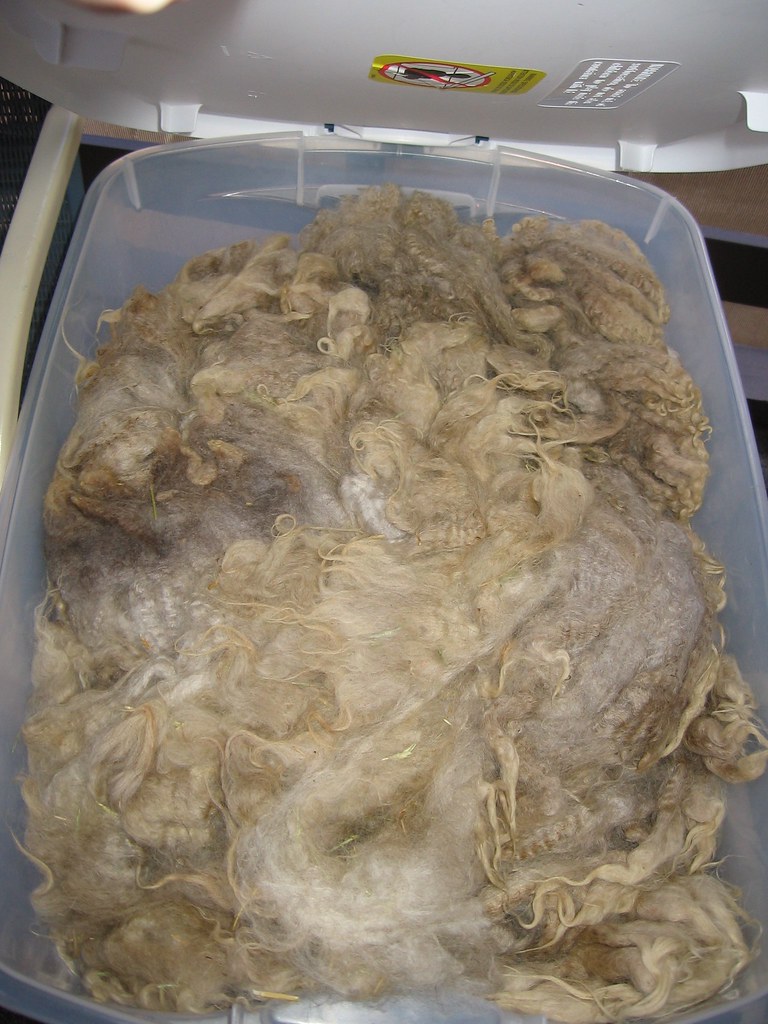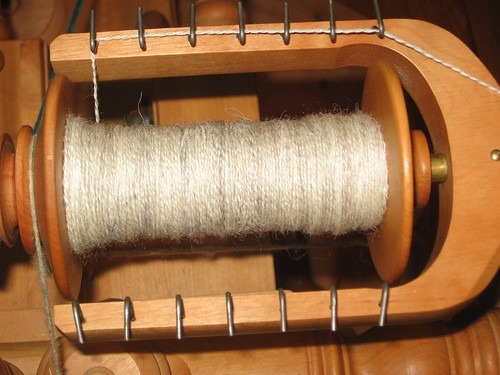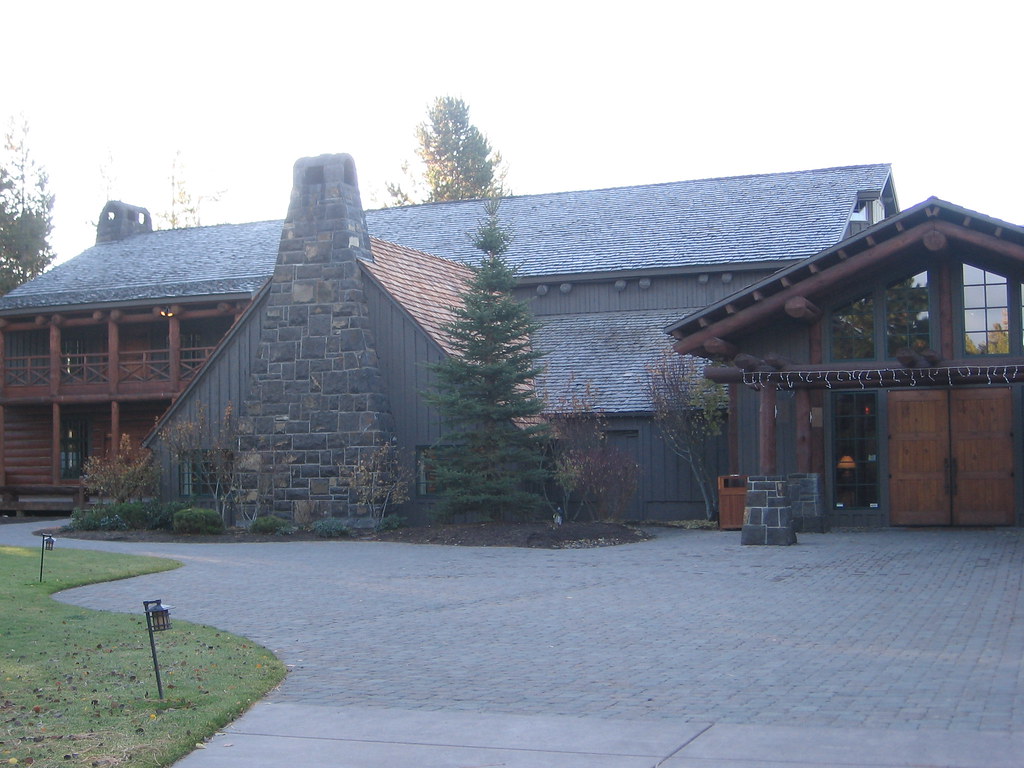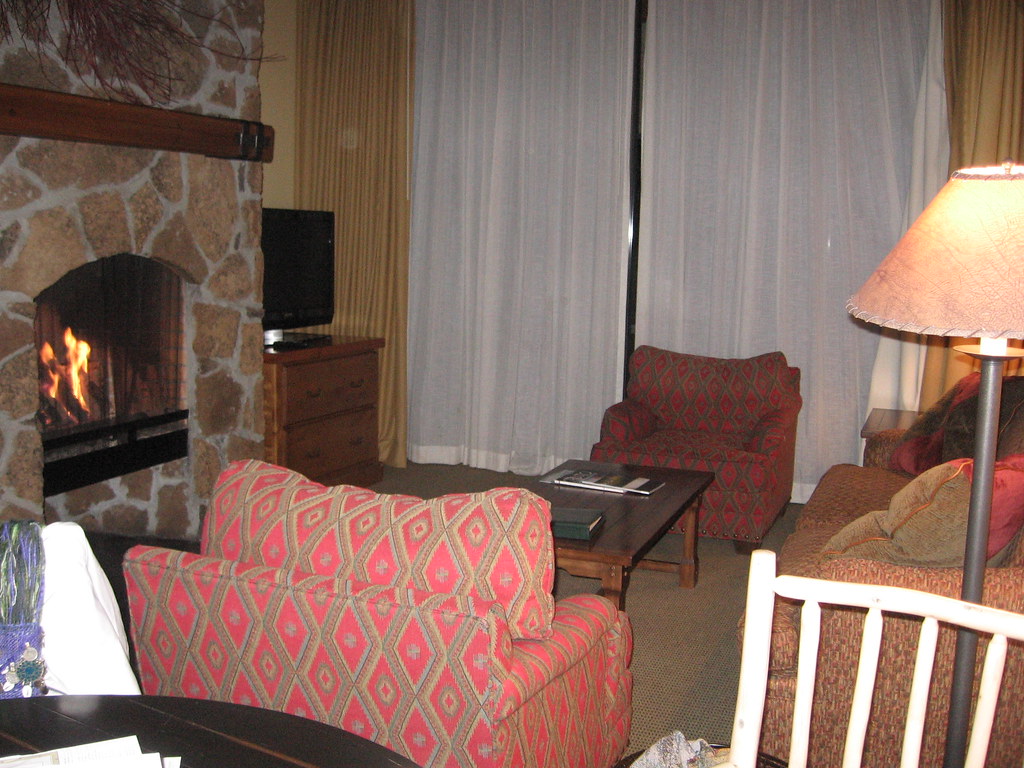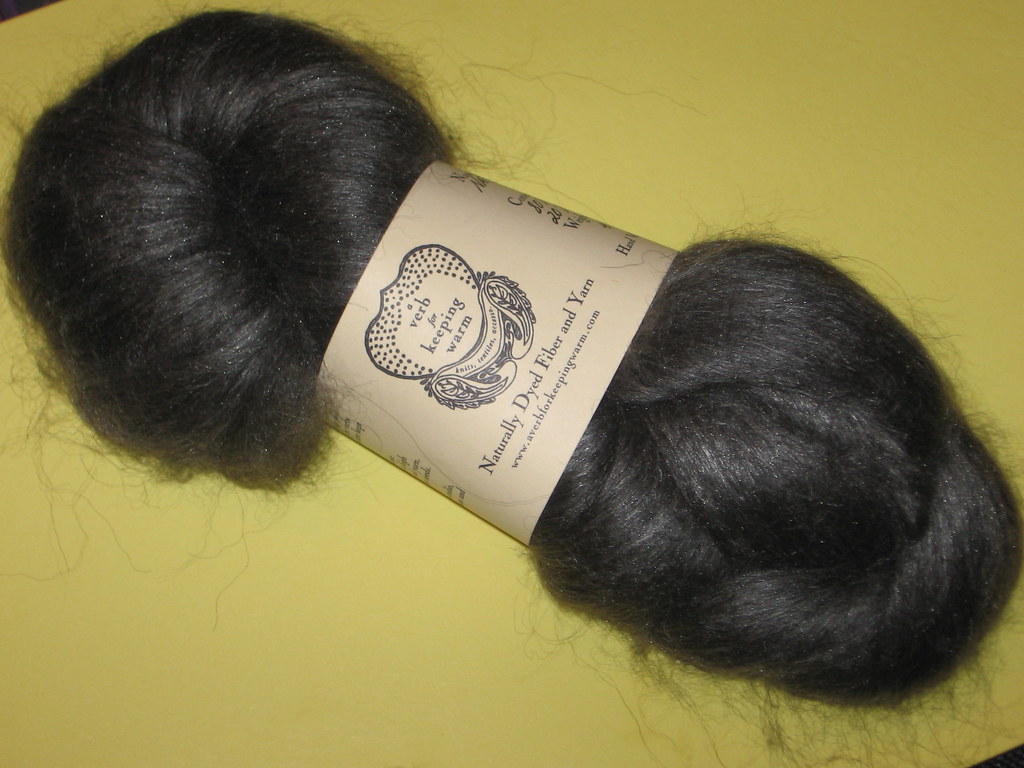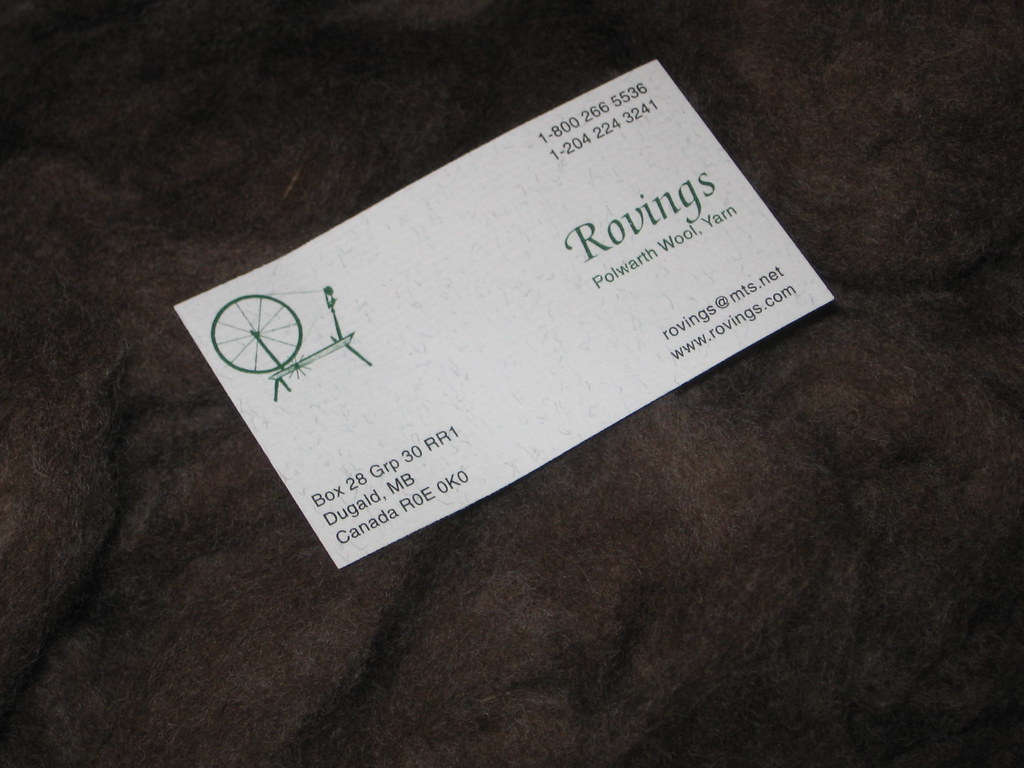Sunday was the final day of SOAR as well as the day of the time change. Thanks to the time change and the jet lag, I woke up around 4 am and could not get back to sleep at all. I ended up using the time well by using it to pack and cast on for a new sweater. November is NaKniSweMo or National Knit a Sweater Month to correspond with NaNoWriMo or National Novel Writing Month. In my effort for this month, I've started a bohus inspired cardigan which involves a very long steek down the middle. I'm slightly nervous about that one. The body is all stockinette but I've kind of stalled out on it due to an issue with the sleeves.
Many people had already left on an early flight so breakfast was an even smaller affair than normal. After that, I returned to the room to finish packing. I had shoved all of my clothes into the small backpack that zips onto the front of the suitcase. The suitcase was left open for the ~3 pounds of fiber and bags of sample fiber we got in class and in the goodie bag. My roommate helped me squash all of the air out of the various bags of fiber and we quickly zipped up the suitcase. I swear, if a TSA agent had to open my bag, someone would have lost an eye. My bag was under that much pressure.
I did shove some of the fiber in my spinning wheel carry-on to act as padding for my wheel. I also put my pashmina wrap and pajama bottoms in there for my red-eye flight from San Fransisco to Philadelphia. I was not going to be stuck on the airplane all night without having PJs! :)
There was an interesting talk about taking spinning wheels to Africa and how people are using knitting to raise money. The lady who was giving the talk had some very nice pictures and lovely stories. I wish I hadn't missed half of it, though. I, for some reason, thought that the talk began at 9:30 and not 9. Oh, well!
After the talk, I finished packing everything and checking out. My roommate and I (the other left on the early morning flight) went back over to the Great Hall for lunch and general hanging out. There were only a handful of us at lunch, I think less than 12. We all took our time over the meal because all of us were leaving on the 4:30 or 5:30 shuttles that evening. Some of us stayed in the Great Hall for a couple of hours, knitting and spinning away. Thankfully knitters and spinners are always occupied! We were able to watch some of the Columbia people set-up for their conference which is how we figured out there was going to be a fashion show in the silk room. From there we moved on to the main lodge to find more seating area which we could colonize. We ended up hanging out with some other spinners who had taken over the lobby. It was a lot of fun to talk about what we learned and who we met at SOAR.
Four of us were on the flight to San Fransisco that evening so we were able to continue the experience a little longer. This might be funny to you but it was really nice to be able to have someone else watch your bags while you ran into the restroom or got food. That is definitely a hassle of traveling alone!
spot the wheels!
At San Fransisco, we parted ways and I ran (ish) to catch my plane in another terminal. Did you know that, once you leave one terminal to go to another, you have to go back through security? I have to say that I hate that with a passion? Of course my spinning wheel caught the screener's attention so my bag got flagged for a more thorough search. I believe that is when tragedy (ish) struck. The security guard checked through everything and my spindles got moved around. I didn't have time to repack and shift everything back because I wanted to grab dinner before getting on the plane. (Sidenote: Best portabello mushroom sandwich EVER! It was some of the best airport food I've had. Though, it could be because I was just so hungry.) I changed into my PJs and was ready for my red-eye flight. The only problem was that I had to gate-check my bag.
Now, I wasn't too worried about gate-checking because your bag normally meets you at the next gate and you can carry it with you for the next part of your flight. My wheel was so well packed with fiber, yarn and PJs that not that much would shift around with normal gate-checking. This time, however, they were checking the bags through to your final destination. That means picking it up at baggage claim which means they aren't as careful with your bags. Are you starting to get the idea? (Don't worry, it wasn't my wheel that got damaged!) The red-eye was actually nice because there wasn't a person in the middle seat so the guy on the aisle and I could kind of stretch out. My red-eye flew into Philadelphia and then I hopped on a plane to Columbus. After picking my car up in the long-term parking lot, I was headed home!
I ended up going to the barn before heading home because my horse had missed me over the weekend. Apparently, the people at the barn thought he was sick because he was acting so depressed. It took one of them telling Java that I hadn't left for good to get him to start eating again. I told him that I was going out of town but I should have told him when I was coming back. Poor guy thought I had deserted him!
Once home, I started showing Mom all of my purchases and telling her all about SOAR. I showed her my turkish spindle and she asked, "Is the shaft supposed to be bent like that?" Noooooo! I am willing to bet that my spindle got pinched between parts of my wheel in the suitcase and then got broken in the baggage handling. I didn't even have a chance to spin on it! I'm going to have to contact Carolina Homespun to see if they have replacement shafts or if they can contact the maker and have him make me one. Le sigh!
OK, now that I'm finally caught up with SOAR (only a month late) I can update you on everything else in another post!


